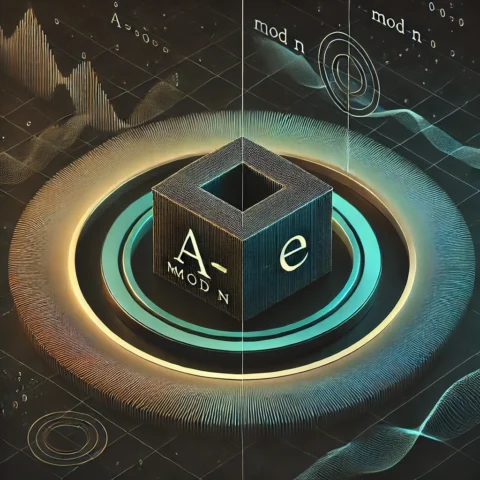Modular exponentiation (calculating ae mod n) is the beating heart of public‑key protocols like RSA and Diffie‑Hellman. While the concept is straightforward, a naive implementation can be painfully slow — and even leave you vulnerable to side‑channel attacks. In this post, you’ll discover:
- Why computing ae then applying the modulus is inefficient
- How the Square‑and‑Multiply algorithm slashes the number of multiplications
- The difference between Left‑to‑Right and Right‑to‑Left implementations
- A step‑by‑step example calculating a23 mod n
- How performance optimizations can inadvertently leak secret bits
- Practical techniques to harden your code against side‑channel attacks

Why Modular Exponentiation Matters
Modular exponentiation is the cornerstone of many cryptographic systems. But exponents in crypto are enormous (often hundreds or thousands of bits), so computing ae mod n efficiently is crucial for performance and energy use.
Naive vs. Iterative Implementations
Method 1: Exponentiate then Mod
result = a ** e
result %= nThis is simple but impractical — intermediate values explode exponentially.
Method 2: Iterative Multiplication
result = 1
for _ in range(e):
result = (result * a) % nBetter, but still requires multiplications, which is prohibitively expensive for large exponents.
Square‑and‑Multiply: A Game Changer
By leveraging the binary representation of e, Square‑and‑Multiply reduces complexity from O(e) to O(log e) multiplications and squarings.
Left‑to‑Right Implementation
- Convert to binary (s+1 bits).
- Initialize
result = 1. - For each bit from the most significant to least significant:
- Square:
result = (result * result) % n - If the bit is 1, multiply:
result = (result * a) % n
- Square:
Right‑to‑Left Implementation
- Convert to binary.
- Initialize
result = aif the least significant bit is 1; otherwiseresult = 1. Setbase = a. - For each remaining bit up to the most significant:
- Square:
base = (base * base) % n - If the bit is 1, multiply:
result = (result * base) % n
- Square:
2310 = 101112. Using Left‑to‑Right:
| Iteration | Bit | Operation | Value (pre‑mod) | Partial Result |
|---|---|---|---|---|
| Init | — | initialize | — | 1 |
| 1 | 1 | square + multiply | a | a |
| 2 | 0 | square | a² | a² |
| 3 | 1 | square + multiply | a⁴ × a = a⁵ | a⁵ |
| 4 | 1 | square + multiply | a¹⁰ × a = a¹¹ | a¹¹ |
| 5 | 1 | square + multiply | a²² × a = a²³ | a²³ |
Savings: 7 multiplications vs. 22 — over 70% fewer operations!
Side‑Channel Vulnerabilities
Square‑and‑Multiply’s conditional multiplication step (executed only if a key bit is 1) creates observable differences in:
- Execution time (extra branching)
- Power consumption (more operations = higher current)
Attackers can exploit these differences to infer secret exponent bits via timing and power analysis attacks.
Mitigation Strategies
- Constant‑Time Algorithms: Avoid data‑dependent branches.
- Montgomery Ladder: Ensures a fixed sequence of square and multiply for every bit.
- Exponent Blinding: Randomize the exponent before computation.
- Base Blinding: Add random masks to inputs, removing them after.
Conclusion
Efficient modular exponentiation is essential for fast, low‑power cryptography — but must be implemented with care. Square‑and‑Multiply dramatically reduces computation cost but introduces side‑channel leakage. Combining constant‑time techniques and algorithms like Montgomery Ladder delivers both speed and robust security.
To further deepen your understanding of modular exponentiation and its critical role in cryptography, check out our related articles:
– Modular Exponentiation: Fundamentals, Applications, and Hardware Security Challenges, where we explore the mathematical foundations and practical applications of modular exponentiation in protocols like RSA and Diffie-Hellman, along with the hardware challenges they present.
– Understanding Modern Cryptography with Modular Exponentiation, which delves into the integration of modular exponentiation in modern cryptographic systems, highlighting its efficiency and security implications.
Together, these articles provide a comprehensive view of modular exponentiation, from its theoretical underpinnings to its practical implementations and security considerations.





